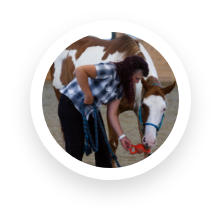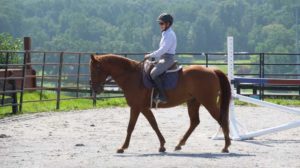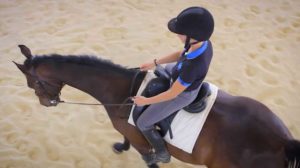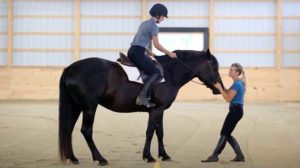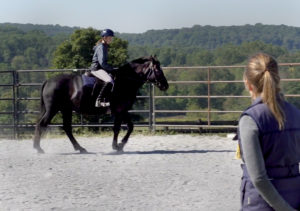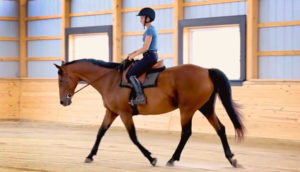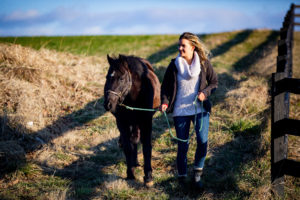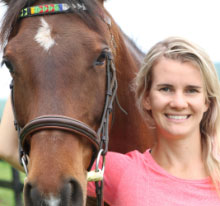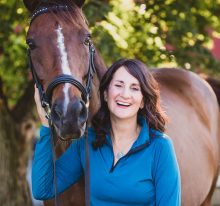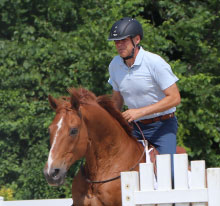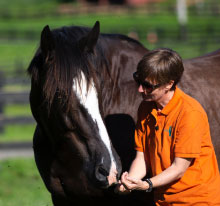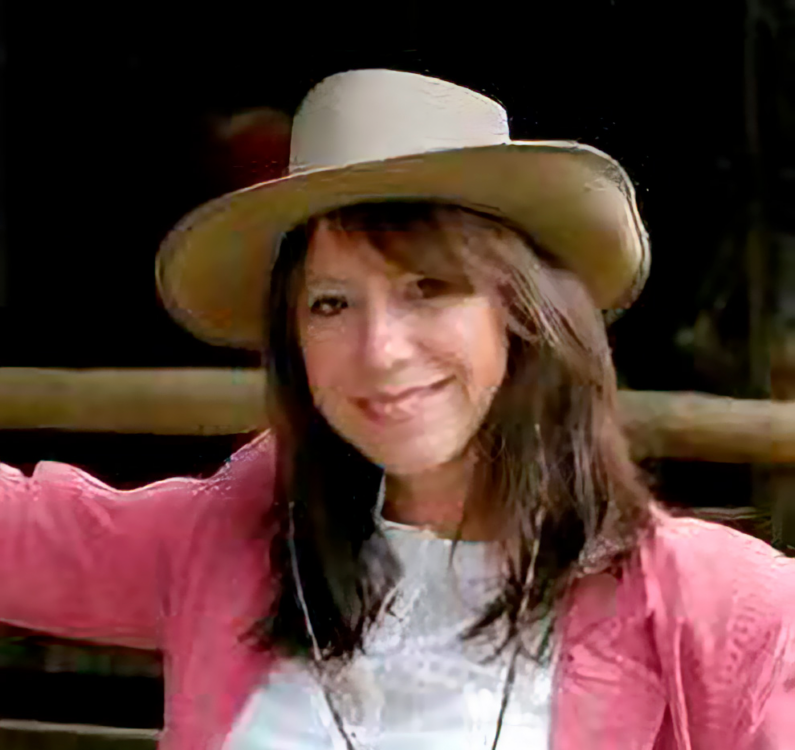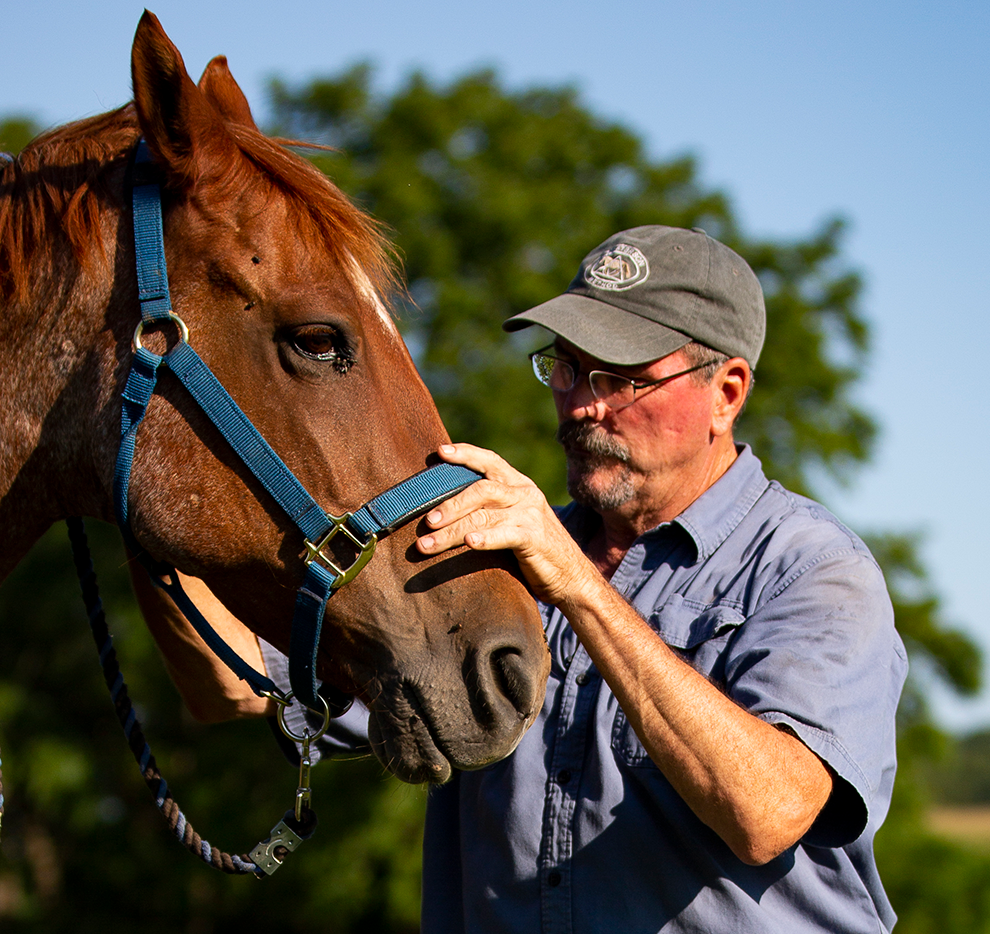Education to
Ride
Your Horse
Confidence
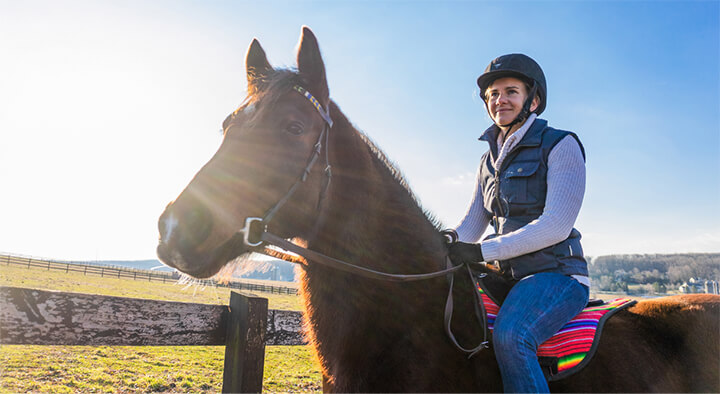
Better Riding In 7 Days (Free Mini Course)
Daily exercises for an immovable seat, steady hands, and a happier horse
Connection
Community
Inspiration
Want to learn with people who love horses for the joy of the horse, not just for the flashy ribbons? Who are pursuing a dream of riding, even when that means facing some fear. Whether you just started riding or you’ve been on the back of a horse your whole life, you’re at the right place.
Welcome to HorseClass, a global community of riders who put the horse first, with a faculty of instructors who teach the newest science and the classical traditions of riding, training, and caring for horses.
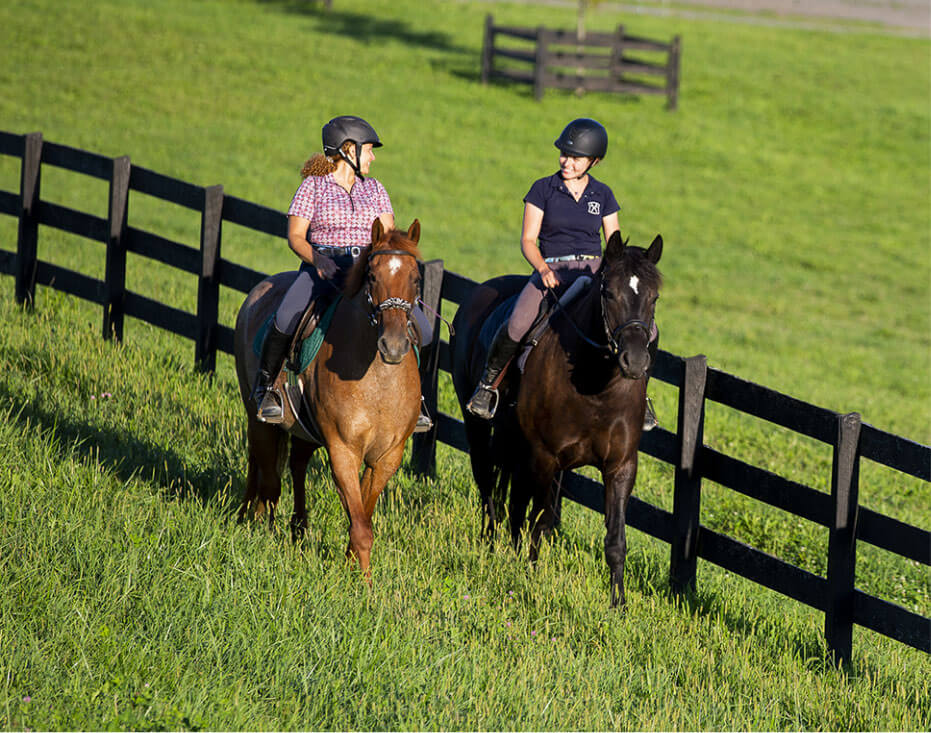
JOIN US IN HORSECLASS
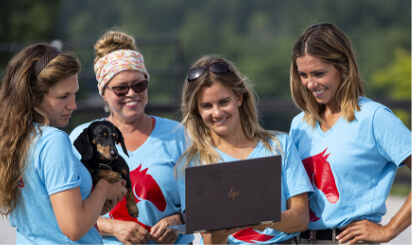
MEMBERSHIP
COMMUNITY
Join our Membership Community to be supported and inspired as you become a better person for your horse.

ONLINE
COURSES
Learn at home through our Online Courses to reach the next level in your riding, training, or in the relationship with your horse.

in

with

CHOOSE YOUR PATH
LEARN ANYWHERE & ANYTIME
FREE VIDEO EVERY FRIDAY
Watch Our Most Popular Videos
VIEW VIDEOS BY TOPIC
SEARCH OUR FREE VIDEO LIBRARY
MEET THE INSTRUCTORS
Callie King
Founder of HorseClass
Callie King is the founder of HorseClass and loves connecting people and ideas and when working with horses or people, she believes it is the connection and relationship that matters most.
In her teaching and training, Callie takes a science based and holistic approach, considering the health and soundness of the horse, the suitability of saddle and tack, and the individuality of each horse and rider.
Callie strives to create a positive learning environment for students and horses, always looking for ways to make learning fun, and incorporate the newest information and research on psychology, behavior, and learning.
Patrick King
Classical In Hand Work
Patrick has a unique breadth of experience, riding in varied disciplines, and studying with many other master horsemen, including Ray Hunt, Mark Russell, and Master Luis Valenca. He specializes in teaching the principles of classical dressage to riders from ALL disciplines.
Patrick has been teaching clinics around the world for over 18 years and started over 3.000 young horses.
Here at HorseClass, Patrick King teaches our In Hand course, where he will take you and your horse through a series of fun exercises that will help your horse find relaxation, to both move and feel better.
Kaitlyn McGarvey
Positive Learning for Riders
Kaitlyn loves to create partnership between horse and rider, whether that is working with a person and their own horse or with their school horse in each lesson.
Kaitlyn has an impressive resume, working in and studying the disciplines of eventing, and classical dressage through the upper levels.
Even in the roles she had that were focused on preparing horses for competition, Kaitlyn recognized the importance of the relationship between horse and rider, a relationship build on understanding, patience, compassion, and trust.
Angelo Telatin
Horse Behavior & Learning
Dr Angelo Telatin is a PhD in Equine Behavior as well as a Professor of Equine Science at Delaware Valley University and an experienced showjumper rider, trainer, and coach.
Angelo has brought many young horses from their first jump to successful competitions and has also developed a specialty in retraining jumpers that are “burnt out” and now known for refusals or worse.
His success comes from a slow and systematic approach, teaching the horses one new skill at a time and moving forward when they are showing the necessary skill level and confidence to do so.
Wendy Murdoch
Mechanics of Movement
Wendy Murdoch is an international clinician and riding instructor with over 30 years experience as well as a Feldenkrais(R) practitioner.
Early in her career, Wendy was an apprentice to Centered Riding founder Sally Swift, and esteemed horse woman Linda Tellington Jones.
Wendy has an expertise in understanding movement, helping riders change those old habits and patterns to become stable, confident, and effective.
Andrea Wady
Horse & Human Relationship
Andrea Wady has spent her lifetime seeking harmony with horses.
Andrea has been riding since she was a child, competing in showjumping and endurance, and running a successful horse tours company in Costa Rica. However, she always felt something was missing and wanted more in the relationship with her horses.
Andrea went on a journey, studying with liberty trainers and trying new techniques with her own horses. Through years of study, Andrea found the missing piece in her horsemanship and the essence of creating relationship with horses – Pure Liberty.
Heidi Blackman
Yoga for Riders
Heidi has been practicing yoga for over 17 years and is a specialist in teaching Yoga for Riders. She has always had a passion for animals and grew up riding horses and spending as much time as possible at the barn.
Heidi lives in Nosara, Costa Rica and teaches yoga classes for all levels and is co-founder of a retreat company combining the transformative power of yoga and horses.
Heidi’s formal training in yoga is a 500 hour Registered Yoga Training (200 hours of yoga teacher’s training through YogaWorks with Kia Miller and 300 hours of SmartFlow training with Annie Carpenter).
Cathy Woods
In The Moment
Cathy Woods is a internationally known yoga and meditation teacher, with a specialty in bringing these practices to equestrians.
Cathy teaches her Mind. Body. Equine® Retreats at centers and ranches around the United States and in Iceland (including at our HorseClass Farm Campus!)
She has authored the book Yoga for Riders, and as her students say, Cathy is the “real deal” when it comes to teaching mindfulness practices. She brings over 30 years experience to help her students understand true wellness, physically and mentally, and how it can transform their riding.
Jim Masterson
Gentle Bodywork
Jim Masterson is an equine massage therapist and the creator of the world-renowned Masterson Method®.
For Jim, it started in 1998, while he was grooming horses on the U.S. hunter-jumper show circuit, Jim noticed while watching physical therapists work on horses that the horse exhibited certain subtle changes in behavior that correlated to what the therapists were doing. He learned that if you trust and follow what the horse is telling you as you work on it, the horse’s body will participate in the process of releasing tension. The result is not only an improvement in performance, but also in the trust that develops between the horse and human.
Satya Keyes
Meditation and Reiki Teacher
Satya is versed in meditation and mindfulness training in Japan, and India and Hawai’i for over 40 years; as well he is a Master Depth Psychologist with an emphasis in Creativity and DreamTending dream work.
He is also a Certified Reiki Master for Humans and Horses/Animals; He is trained in horsemanship in Liberty work thru Carolyn Resnick of CRM, Neda DeMayo of Return to Freedom, and Callie King of HorseClass.
Lisa Pulliam
Finding Calm
Lisa Pulliam is passionate about helping clients develop the practical skills and the mindset to feel calm – in riding and in life.
Lisa considers herself a second-season equestrian returning to her riding passion in her forties and adopting her first horse, Kodiak Jack, an OTTB rescue who stole her heart at their first hello. In her journey with Kody, she discovered how to navigate through fear that nearly threatened to sabotage her joy of riding.
Her riding experience partnered with her unique mental health perspective has come together in Finding Calm: Helping Riders Navigate through Fear and Anxiety. (For Release Early 2024)
Lisa holds certifications from the Natural Lifemanship Institute as a Trauma-Informed Equine-Assisted Coach and Equine Specialist, Life Breakthrough Academy Coach and former Instructor, Highlands Ability Battery Consultant, and will complete a Master’s in Clinical Counseling with a Trauma concentration from Eastern University in 2024.
Better Riding In 7 Days (Free Mini Course)
Daily exercises for an immovable seat, steady hands, and a happier horse
WHAT OUR ALUMNI HAVE TO SAY…
 I signed up for the Balanced Riding course after watching Callie on YouTube. I’ve learned so much from this course. As you start riding when you’re young, you learn the fundamentals, but then you drift so far away from them in different skills that you’re learning that you sometimes kind of forget or don’t appropriately utilize those fundamentals anymore. And she’s really brought me back to that level of understanding specifically how to ride with the seat. And I think that’s kind of the most powerful thing you can learn to do as a rider, is to sit your horse appropriately, not have to rely so much on your reins. So that’s been huge, just completely changed the way I ride.
I signed up for the Balanced Riding course after watching Callie on YouTube. I’ve learned so much from this course. As you start riding when you’re young, you learn the fundamentals, but then you drift so far away from them in different skills that you’re learning that you sometimes kind of forget or don’t appropriately utilize those fundamentals anymore. And she’s really brought me back to that level of understanding specifically how to ride with the seat. And I think that’s kind of the most powerful thing you can learn to do as a rider, is to sit your horse appropriately, not have to rely so much on your reins. So that’s been huge, just completely changed the way I ride.


 I just want to say thank you to everyone for all the comments and positive comments I have read while on this site. I have taken many of the free courses offered by CRK training over the past few months and it has help with my confidence. I actually rode my daughter’s horse for the first time outside in the ring since she came home from a free lease September. I have practiced many of the lessons and watched many videos. It was just at a walk but I felt confident with every thing I have learnt so far, plus I have learnt that I am not the only one who gets nervous and that it is okay to be nervous and thanks to Callie’s lessons I have learnt to take one day at a time and work though the times I feel nervous.
I just want to say thank you to everyone for all the comments and positive comments I have read while on this site. I have taken many of the free courses offered by CRK training over the past few months and it has help with my confidence. I actually rode my daughter’s horse for the first time outside in the ring since she came home from a free lease September. I have practiced many of the lessons and watched many videos. It was just at a walk but I felt confident with every thing I have learnt so far, plus I have learnt that I am not the only one who gets nervous and that it is okay to be nervous and thanks to Callie’s lessons I have learnt to take one day at a time and work though the times I feel nervous.

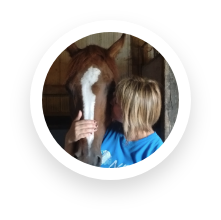
 As a new horse owner and rider I wanted a training series that would walk me through each step of equitation for a beginner. That is exactly what I got with the CRK Balanced Rider Series. Callie King is a talented horse trainer and accomplished rider and it shows through each of her videos. She is clear and concise when discussing her insider knowledge of horse care, training, and riding.
As a new horse owner and rider I wanted a training series that would walk me through each step of equitation for a beginner. That is exactly what I got with the CRK Balanced Rider Series. Callie King is a talented horse trainer and accomplished rider and it shows through each of her videos. She is clear and concise when discussing her insider knowledge of horse care, training, and riding.


 As with all of the work Callie does, this program is informative, thoughtful, evidence based. The course provides good resources on horsemanship, managing fear, developing confidence. The videos of “how to” help your horse manage his fear were particularly good (in that) helping my horse manage moments of fear, helps me to manage mine.
As with all of the work Callie does, this program is informative, thoughtful, evidence based. The course provides good resources on horsemanship, managing fear, developing confidence. The videos of “how to” help your horse manage his fear were particularly good (in that) helping my horse manage moments of fear, helps me to manage mine.

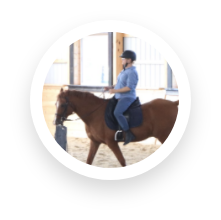
 This is why I so enjoy your videos and webinars. Your approach is so positively based and therefore so kind and gentle while still being very effective. You work with the horse and not against him.
THANK YOU!
This is why I so enjoy your videos and webinars. Your approach is so positively based and therefore so kind and gentle while still being very effective. You work with the horse and not against him.
THANK YOU!

